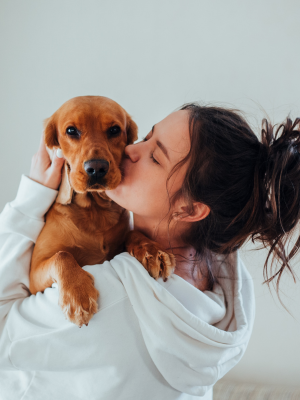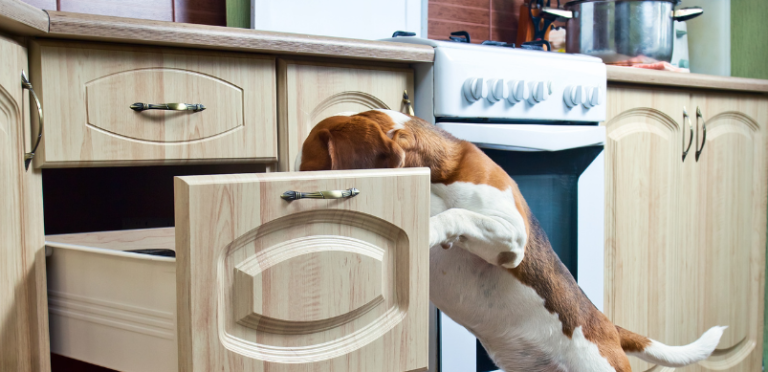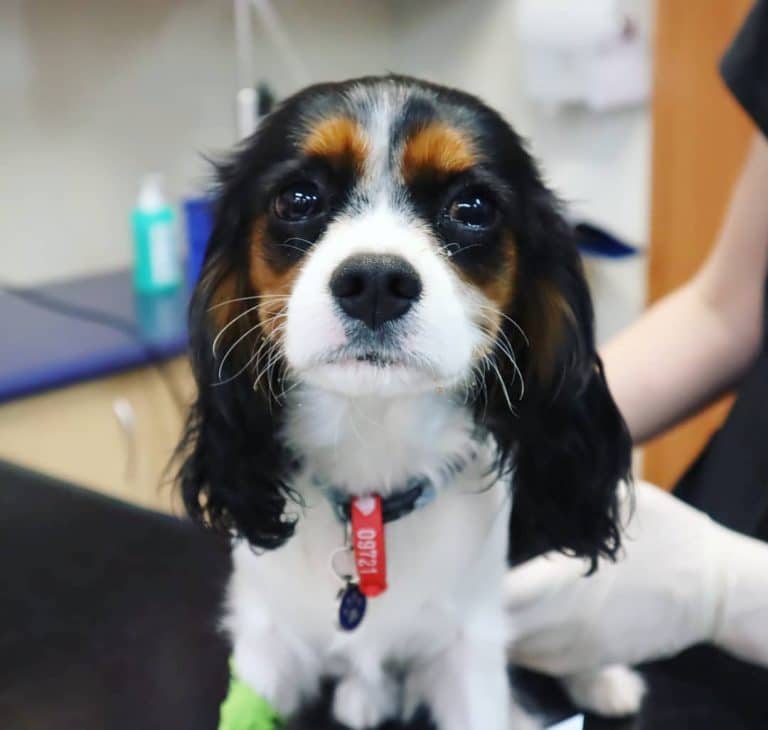The Ultimate Guide to Easing Separation Anxiety in Dogs
Understanding the complexities of separation anxiety in dogs involves delving into the nature of their emotional connections. While the exact genesis of this condition remains elusive, it is evident that not all dogs are equally susceptible. Separation anxiety can occur when a dog experiences a profound disconnection from the person or people they have formed an intense bond with.
Have you noticed your dog excessively anxious when you leave home? Do you return to find belongings destroyed? Does your dog display overwhelming excitement upon your arrival? If you responded affirmatively to these inquiries, your furry friend might be experiencing separation anxiety.
Dogs, being social animals, thrive on companionship and can become distressed when separated from their owners. The positive news is that you can alleviate their distress if your dog indeed suffers from separation anxiety.
Numerous situations can act as catalysts for separation anxiety in dogs, each bearing its weight of emotional impact:
- The initial exposure to being left alone, marking a stark transition from constant human presence.
- Navigating the shift from an environment of continuous companionship to sudden solitude.
- Reacting to a traumatic event in their past, which could trigger separation distress.
- Disruptions or alterations in their routine or daily schedule, causing distress and confusion.
- Changes in ownership that disrupt the established emotional bonds.
- Family dynamics undergoing changes, such as the loss of a beloved family member or pet, welcoming a new member, or someone departing the household.
- Adjusting to a relocation, moving to a new house can significantly impact a dog’s sense of security and comfort.
Understanding the different things that make anxious dogs can help you mitigate the issue before it arises. By giving them the right attention and care, we can help them feel safe and happy when we’re not around.

Identifying the Signs of Separation Anxiety in Your Pooch
When your beloved pet is dealing with separation anxiety, they often communicate this through a variety of behaviours. Keeping an eye out for these distinct signals can help you understand if your furry friend is feeling anxious and unsettled:
- Excessive barking: Persistent barking, almost excessively, as a response to the stress of being apart from you.
- Scratching at doors and floors: Sometimes, in an attempt to reunite with you, dogs might scratch at doors or even the floor, signalling their anxiety and longing.
- Destructive chewing: Anxious pups may engage in destructive chewing behaviours, targeting household items like furniture, due to their distress when left alone.
- Accidents indoors: Even if they’re typically house-trained, dogs suffering from separation anxiety might urinate or defecate indoors due to the emotional strain of being apart.
- Restless pacing: Continuous pacing around the house or a specific area can be a sign of agitation and unease.
- Digging: Some dogs may start digging or pawing at carpets or furniture, trying to alleviate their anxiety or create an escape route.
- Trembling: Visible trembling or shaking, especially upon your departure or during separation, can indicate heightened anxiety levels.
- Increased heart rate and rapid breathing: Physical signs such as a faster heart rate and quickened breathing might accompany their emotional distress.
- Attempts to escape: Dogs might make desperate attempts to flee from the home or yard, seeking your company and comfort.
- Self-harming behaviours: In severe cases, extreme distress might lead to self-harm, where a dog might excessively lick, bite, or harm themselves.
However, before concluding that your pet is experiencing separation anxiety, it’s crucial to consider other potential factors and rule them out. Several situations and medical issues can sometimes mimic separation anxiety, including:
- Boredom: Lack of stimulation and mental engagement can result in behaviours that mirror anxiety when left alone.
- Medical conditions or medication side effects: Some health issues or reactions to medications might cause behaviour changes similar to separation anxiety.
- Lack of physical and mental stimulation: Dogs that aren’t adequately exercised or mentally stimulated might exhibit signs of distress when alone.
- Barking triggered by unfamiliar sights or sounds: External stimuli, like strange noises or sights, could prompt barking, which may be mistaken for separation anxiety.
- Inadequate chew items for teething puppies: Young dogs going through teething phases might display destructive behaviours if they don’t have appropriate items to chew on.
Recognising these nuances helps in accurately identifying separation anxiety and ensuring your furry friend receives the appropriate care and support they need to feel secure and content even when you’re not around.

Can You Prevent Separation Anxiety in Pets?
Transitioning from constant companionship to being apart can be confusing for your furry friend. Whether you’ve been working from home and are heading back to the office the sudden changes in your presence might leave your pooch feeling confused and vulnerable to developing separation anxiety.
The good news is that there are numerous strategies you can use for treating separation anxiety in your pets. Here are some top tips to assist your pet in adapting to a new routine:
- Gradually ease into the new routine: Pets thrive on consistency, so slowly adjusting their schedule will soften the impact once you’re no longer home around the clock.
- Familiarise them with being alone: Introduce short periods of separation multiple times a day to acclimate them to your absence gradually.
- Provide solo time: Allow your pet to spend time alone, as it helps them feel more comfortable when left for extended periods. Create a safe and cozy space separate from you for them to relax.
- Maintain a balanced level of attention: Try not to overdo the attention your pet receives compared to what they’ll get once you’re not constantly present.
- Encourage independent play: Promote playtime activities that don’t involve your direct participation.
- Keep arrivals and departures low-key: Avoid making a big deal out of leaving or returning home. Ignore your pooch for about 15 minutes before departure and for the initial moments upon your return, then greet them calmly.
By gradually introducing changes and implementing these strategies, you can help your furry companion adjust to the forthcoming adjustments in your routine, reducing the likelihood of them experiencing separation anxiety.

How to Help a Dog with Separation Anxiety
Helping your dog overcome their anxiety when you’re away requires patience and strategic efforts. Crucially, avoid punishing your pooch for their anxious behaviour, as this can exacerbate their distress. Instead, consider these tactics to support and alleviate your dog’s separation anxiety. Here are our top recommendations:
- Provide Stimulation: Both visual and mental stimulation can ease feelings of isolation. Leave behind an item of your clothing with your scent, and consider leaving curtains open or playing soothing sounds like music or audiobooks.
- Establish a Departure Signal: Create a consistent cue, whether a word or action, to signal your departure. This can help your dog anticipate your return, providing reassurance.
- Exercise and Play: Start the day with a morning walk to tire them out, aiding relaxation while you’re away. Rotate interactive toys to keep them mentally engaged and prevent boredom.
- Consider Daycare or a Dog Walker: If your dog enjoys socialising, doggy daycare or a dog walker can provide companionship and activity during your absence.
- Seek Companionship: Enlist the help of friends, family, or neighbours to keep your pet company while you’re away.
- Involve Them in Your Routine: Take your dog along for school pick-ups or family outings to include them more in your daily activities.
- Long-Lasting Treats: Provide toys like Kongs filled with treats to keep them occupied and stimulated.
In severe cases of separation anxiety, consulting your vet is advisable.
By incorporating these effective strategies and introducing changes little by little, you’re actively aiding your beloved furry companion in finding a sense of security and ease during your absences. These methods play a crucial role in gradually building their confidence and comfort when separated from you.
Over time, your pet can learn to adapt and feel less stressed, fostering a stronger bond built on trust and assurance, even when you’re not physically present. The goal is to create a nurturing environment that ensures your pet feels safe and content, enhancing their well-being and happiness in the long run.



